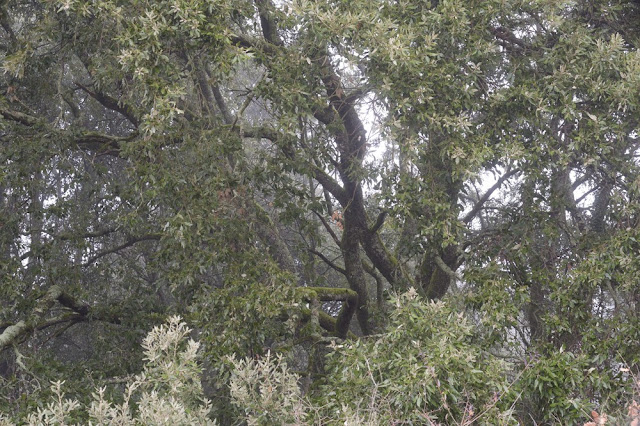This big tree has green leaves even in winter. Sometimes it forms real forests, mainly on dry limestone hills, but not only there, in Perigord there are some exemples on sandy soil. It is Holm Oak (Quercus ilex).
Yes, it is a real Oak, it makes acorns.
Here they are still small. You see mainly the cup from where an acorn tries to grow out. Remnants of the female flower are still visible like a tiny brown star.
Holm Oak has Autumn and Spring at the same time. The leaves, that can stay on the branches for several years, loose their chlorophyl and then fall down in May. In the same period the tree makes new sprouts and flowers. Young leaves are tender green and they as well as the new branches are covered in a kind of whitish felt.
At the top of this stem, where the leaves are attached, you see some very small female flowers. The dry brown scales are remnants of the leaf buds.
Male catkins are much larger. They grow on the same tree.
Holm Oak grows slower than other Oaks from Perigord,
but it can stand hot and dry weather somewhat better. Climate changing, with hotter and dryer summers is no good news for Oaks, but this species could have a slight evolutionary advantage over other Oak species.
It is a wild - indigenous - tree, but in Dordogne there are many strains coming from elsewhere. Mycorrhized with truffle mycelium, Holm Oaks are planted to harvest this tasty and expensive mushroom.











